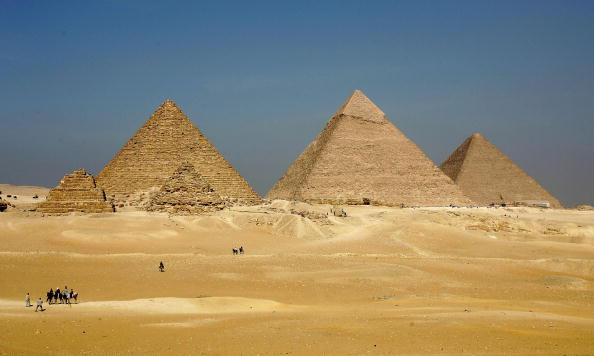Pyramids of Egypt reveal new secrets after extensive scanning mission
After one year, the ScanPyramids project has yielded its first results.
Dr Khaled El-Enany, Egypt's minister of antiquities, met with the archaeological committee working on the ScanPyramids project on 13 October. They reviewed the latest findings from the mission, which began in 2015. Its aim is to study the great pyramid of Khufu and the pyramid of Khafre on the Giza plateau, as well as two pyramids on the site of Dahshur known as Bent and Red.
ScanPyramids aims to map and probe the heart of Egypt's largest pyramids of Egypt, without drilling a single hole in the structures. To do so, the international team of experts working on the project uses some of the world's most advanced technologies – radiographic muons, infrared thermography, photogrammetry, scanner and 3D reconstruction.
During this latest meeting the co-ordinator of the project Dr. Hani Helal, went over the achievements of the mission after a first year of archaeological work inside the Great Pyramid of Khufu and the Dahshur Bent Pyramid.
While findings are not clear-cut in Bent Pyramid, work inside the Great Pyramid of Khufu (also known as Giza pyramid) has yielded interesting results.
Indeed, the team has located two anomalies in the structure – one at the upper part of the entrance gate and the second at its northern eastern side. Now more research will begin to identify the natures of these anomalies as well as their functions, nature and sizes.
What secrets do experts hope to uncover?
What could those anomalies be? More than four millennia after being built, the pyramids still remain mysterious. The construction process in particular has puzzled Egyptologists for years.

Khufu pyramid, the last of the Seven Wonders of the Ancient World still in existence, is so massive that they have often wondered how ancient Egyptians managed to erect it. ScanPyramids scientists hope to uncover new clues to understand how it was built in just 25 years.
But it is perhaps the internal structure of the pyramids that remains most enigmatic. In particular it is not clear what purpose the anomalies noticed with the scanning technologies serve, but Egyptologists know that as the Pharaoh's burial complex, they were constructed to be inviolable. It is therefore possible that the anomalies are signs of obstacles to protect Egypt's rulers after death or that they correspond to hidden, secret chambers.
© Copyright IBTimes 2025. All rights reserved.






















